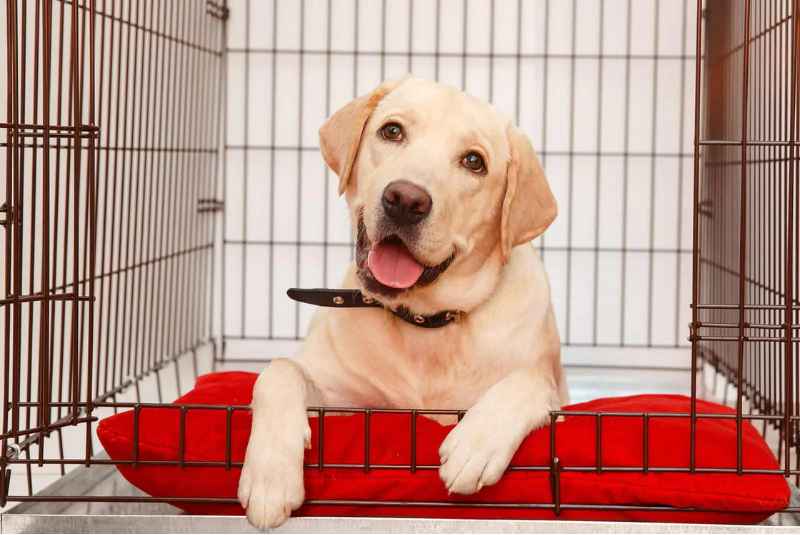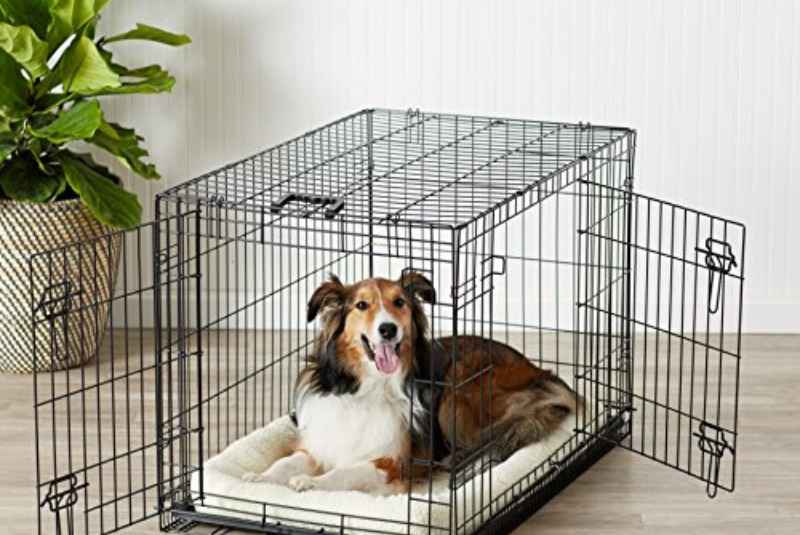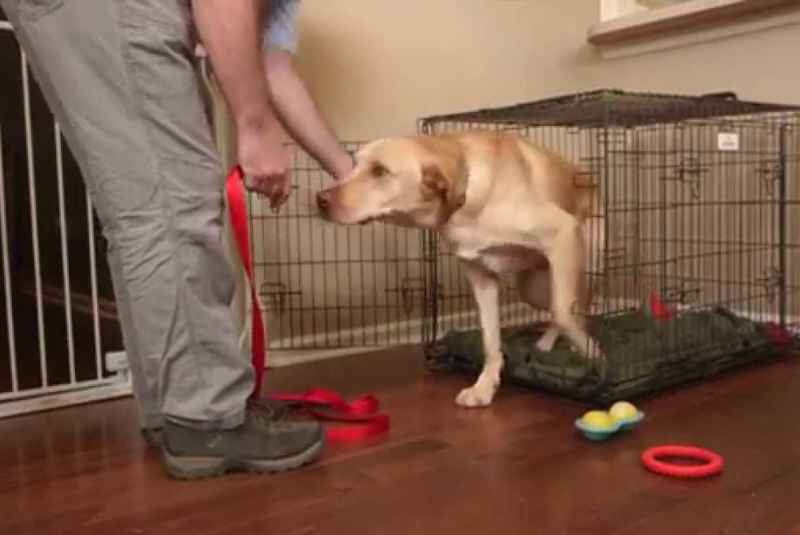Not only pups can be trained to use crates. “Crate-Training an Adult Dog?” Even for mature dogs, it may be a useful tool. Crate training may be a game-changer whether you have a new rescue dog or you just want to enhance your dog’s behavior and comfort. We’ll take you step-by-step through the whole process of crate training an adult dog in this thorough manual.
Read Also: Dogs and Oil Don’t Mix?
Why Crate Train an Adult Dog?
Discover the many benefits of crate training, including creating a safe haven, reducing anxiety, and preventing destructive behaviors.
Choosing the Right Crate
Find out how to select the appropriate crate size and type for your adult dog’s needs.
Introducing Your Dog to the Crate
Learn how to make the crate a welcoming and inviting space for your dog.
Crate Training an Older Dog with Separation Anxiety?
An effective technique to control anxiety and give an older dog with separation anxiety a secure haven while you’re away from home is to crate train them. Crate-Training an Adult Dog, though? It’s crucial to approach this procedure with tolerance, consideration, and tact. An instruction manual for training an older dog with separation anxiety to use a crate is provided below:

- Choose the Right Crate:
- Select an appropriately sized crate that allows your dog to stand, turn around, and lie down comfortably. A crate that’s too large may not provide the security your dog needs.
- Make the Crate Appealing:
- Place comfortable bedding or a favorite blanket inside the crate to make it inviting. You can also include some of your dog’s toys and treats.
- Gradual Introduction:
- Start by introducing the crate to your dog in a positive way. Leave the crate door open and let your dog explore it voluntarily. Reward them with treats and praise when they enter or show interest in the crate.
- Mealtime in the Crate:
- Feed your dog their meals near the crate at first, gradually moving the food inside the crate. This creates positive associations with the crate.
- Short Incremental Crate Time:
- Begin by having your dog spend short periods in the crate while you’re home. Keep the door open, and give them treats and toys to keep them occupied.
- Practice Alone Time:
- Gradually extend the time your dog spends in the crate while you’re in another room. Start with just a few minutes and gradually increase the duration as your dog becomes more comfortable.
- Desensitize Departure Cues:
- Dogs with separation anxiety often become anxious when they notice your departure routine (e.g., picking up keys or putting on shoes). Practice these cues without actually leaving to help desensitize your dog to them.
- Calm Departures and Returns:
- When it’s time to leave, be calm and low-key. Avoid making a big fuss when you return home. This helps reduce your dog’s anxiety surrounding your departures and arrivals.
- Avoid Punishment:
- Never use the crate as a form of punishment. It should always be a positive and safe space for your dog.
- Seek Professional Help:
- If your dog’s separation anxiety is severe, it may be necessary to consult a professional dog trainer or Crate Training an Adult Dog? behaviorist who specializes in anxiety issues. They can provide personalized guidance and possibly recommend medication in extreme cases.
- Monitor Progress:
- Keep a close eye on your dog’s progress and adjust your training methods accordingly. Every dog is unique, and it may take time for them to become comfortable with the crate.
Remember that crate training is just one part of managing separation anxiety. In addition to crate training, it’s essential to provide mental and physical stimulation, practice gradual departures, and ensure your dog has a consistent routine. Crate Training an Adult Dog? Be patient, and with time and effort, your older dog can become more comfortable with being alone in their crate.
Feeding in the Crate
Explore the advantages of Crate Training an Adult Dog? using mealtime as a crate training tool.
Creating a Comfortable Space
Discover how to make the crate cozy and appealing for your dog.
Create Time and Gradual Lengthening
Understand the process of increasing the time your dog spends in the crate.
Using Positive Reinforcement
Learn how to use treats and praise to encourage your dog during crate training.
Avoiding Punishment
Find out why punishment should never be a part of crate training.
Dealing with Anxiety and Crate Training an Adult Dog?
Explore strategies for helping dogs with anxiety or fear of the crate.
Nighttime Crating
Learn how to crate your dog at night to ensure a peaceful sleep for both of you.
Traveling with a Crate-Trained Dog
Discover the convenience of traveling with a crate-trained dog.
Common Crate Training Mistakes to Avoid

Avoid these common errors that can hinder your dog’s progress.
Troubleshooting
Find solutions to common challenges you may encounter during crate training.
Conclusion
In the above, we discuss Crate Training an Adult Dog?, Adult dog crate training is a useful skill that may improve your dog’s wellbeing and peace of mind. You can effectively crate-train your adult dog if you are persistent, patient, and use positive reinforcement.
Read Also On Quora: How do I crate train an adult dog?
Is crate training suitable for all adult dogs?
Crate training can benefit most adult dogs, but it may not be suitable for all, especially those with severe anxiety or aggression issues. Consult a professional if you’re unsure.
How long does it take to crate train an adult dog?
The time it takes varies from dog to dog, but with dedication and consistency, you can see progress in a few weeks to a few months.
Can I leave my dog in the crate while I’m at work?
It’s generally not recommended to leave your dog in a crate for an entire workday. Arrange for bathroom breaks and exercise during your absence.
What should I do if my dog whines or barks in the crate?
Try to identify the cause of the distress. It could be due to boredom, anxiety, or a need for a bathroom break. Adjust your training accordingly.
Should I cover the crate at night?
Some dogs find it comforting to have the crate covered at night to create a den-like atmosphere. Experiment to see what works best for your dog’s comfort.

2 thoughts on “Crate Training an Adult Dog? A Comprehensive Guide”